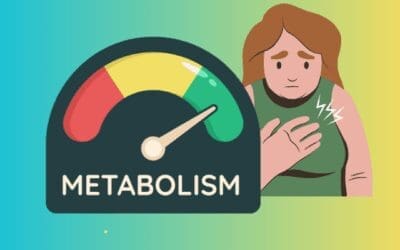The idea of getting started with a workout routine can be exciting, but it’s also common to face challenges along the way. Maybe you lack the motivation to lace up your shoes, feel overwhelmed by all the gym equipment, or simply don’t have enough hours in the day.
Sound familiar?
This article is here to help!
I understand the hurdles that can prevent people from establishing a sustainable exercise routine. That’s why I have created this beginner-friendly guide packed with actionable tips.
Here, you’ll find practical strategies for building a workout plan that fits seamlessly into your lifestyle and keeps you coming back for more.
The long-term benefits of consistent exercise are undeniable.
Regular physical activity can boost your physical and mental health, leaving you feeling energized and accomplished. Imagine feeling stronger, sleeping better, and managing stress with ease – all thanks to the power of exercise!
Finding Your Why: The Power of Motivation

The key to unlocking long-term success with exercise lies in finding your why. Motivation is the fuel that propels you forward, and having a clear reason for moving your body will make all the difference.
Set a Goal
Start by setting realistic, personal fitness goals.
Do you want to improve your overall health and well-being? Gain muscle tone and definition? Increase your energy levels and feel more vibrant? Maybe you have a specific event in mind, like a charity walk or a 5K run.
Connecting with your own internal desires creates intrinsic motivation, the most powerful kind. This is the motivation that comes from within, fueled by the satisfaction of accomplishment and the joy of movement. Compare this to extrinsic motivation, which is driven by external rewards like praise or competition. While external rewards can be a temporary motivator, intrinsic motivation is far more sustainable.
Be Consistent
Turning exercise into a habit takes time and consistency. Here’s how to break it down:
- Set SMART goals: This framework ensures your goals are;
Specific (exactly what you want to achieve),
Measurable (track your progress),
Achievable (challenging but attainable),
Relevant (important to you), and
Time-bound (has a deadline).
For example, a SMART goal could be “walk for 30 minutes, 3 times a week for the next month.” - Track your progress: Seeing your improvement is a fantastic motivator! Use a journal, fitness tracker app, or a simple calendar to mark your workouts.
Accountability
Staying accountable is another key element. Here are some strategies:
- Find a workout buddy: Partnering with a friend provides encouragement and keeps you on track.
- Consider a personal trainer: A trainer can create a customized program and offer personalized guidance.
- Utilize fitness tracking apps: Many apps offer features like workout plans, progress tracking, and even virtual communities to keep you motivated.
Remember, the best exercise routine is the one you’ll stick with. Finding your why, setting goals, and staying accountable will set you on the path to achieving long-term success with exercise.
Planning Your Workouts: Practical Strategies for Beginners

Activity Selection
Choosing the right activities is crucial for building a sustainable exercise routine you’ll enjoy. Select exercises you find fun and that suit your current fitness level. Here are some beginner-friendly options to consider:
- Cardio: Aim for at least 150 minutes of moderate-intensity cardio or 75 minutes of vigorous-intensity cardio per week. Think brisk walking, swimming, cycling, dancing, or elliptical training.
- Strength training: Build muscle mass and improve bone density with bodyweight exercises like squats, lunges, push-ups, and planks. Light weights or resistance bands can be added as you get stronger.
- Group fitness classes: These classes offer a fun and social way to get moving. Many gyms and community centers offer beginner-friendly options like yoga, Zumba, or Pilates.
Be Consistent
Remember, consistency is key! Especially for beginners, focusing on regular exercise is more important than intensity. Start with short, manageable workouts and gradually increase the duration and intensity as you get fitter.
Be Realistic
Crafting a realistic workout schedule is essential for long-term success. Consider your lifestyle and time constraints. Can you dedicate 30 minutes, 3 times a week? Maybe shorter, daily workouts work better for you. Find a schedule that fits your life and stick to it!
Workout Routine Examples
Here are some sample workout routines to get you started. These routines can be modified for different fitness levels.
Sample Workout Routine for Weight Loss:
- 30 minutes of brisk walking or jogging
- Bodyweight squats (3 sets of 10 repetitions)
- Lunges (3 sets of 10 repetitions per leg)
- Push-ups (modified on knees if needed, 3 sets of as many repetitions as possible)
- Plank (hold for 30 seconds, repeat 3 times)
Sample Workout Routine for Building Muscle:
- Squats with light weights (3 sets of 12 repetitions)
- Lunges with light weights (3 sets of 12 repetitions per leg)
- Push-ups (3 sets of as many repetitions as possible)
- Overhead press with light weights (3 sets of 12 repetitions)
- Rows with resistance bands (3 sets of 12 repetitions)
Sample Workout Routine for General Fitness:
- 20 minutes of swimming
- Bodyweight squats (3 sets of 10 repetitions)
- Lunges (3 sets of 10 repetitions per leg)
- Plank (hold for 30 seconds, repeat 3 times)
- Yoga or Pilates class (1 hour)
Don’t forget to warm up before each workout! A proper warm-up prepares your body for exercise and helps prevent injuries. Simple exercises like jumping jacks, arm circles, and light stretches are a great way to warm up.
Cool-down after your workout is equally important. Cool-down helps your body return to its resting state and reduces muscle soreness. Light walking and static stretches are perfect for cooling down.
Overcoming Obstacles: Sticking with Your Routine

Life throws curveballs, and that can sometimes derail your workout routine. Setbacks are normal! The key is to have strategies for getting back on track after missed workouts or periods of inactivity.
Missed Workout
Don’t let a missed workout turn into a quit day! Here’s how to bounce back:
- Start small: Don’t jump back into your pre-setback routine immediately. Begin with a shorter, easier workout and gradually increase intensity as you regain momentum.
- Focus on progress, not perfection: Celebrate any movement you do, even a short walk or some bodyweight exercises at home. Every step forward counts!
- Remember your why: Reconnect with your initial motivation for starting your fitness journey. What were your goals? Refocusing on your “why” can reignite your passion.
Lack of Time
Time management is a common challenge for everyone. Here are some tips for squeezing exercise into your busy schedule:
- Shorter workouts: Even 15-minute bursts of activity can make a difference. HIIT (High-Intensity Interval Training) workouts are a great time-efficient option.
- Incorporate movement throughout your day: Take the stairs instead of the elevator, park further away from your destination, or do some bodyweight exercises during commercial breaks while watching TV.
- Utilize your commute time: Walk, bike, or take public transportation that allows you to walk or jog part of the way.
Boring Activity
Exercise routines can become monotonous, leading to boredom and a lack of motivation. Here’s how to keep things fresh:
- Try new activities: Explore different exercise options like swimming, dancing, or rock climbing. Variety keeps things interesting and challenges your body in new ways.
- Exercise outdoors: Take your workout outside for a change of scenery. Enjoy the fresh air and sunshine while getting active.
- Join a fitness class: Group fitness classes offer a fun and social way to exercise. The camaraderie and guidance from an instructor can keep you motivated.
Remember, listening to your body is crucial. Rest and recovery are essential for optimal performance and injury prevention. Don’t push yourself through pain! Schedule rest days to allow your body to repair and rebuild.
By incorporating these strategies, you can overcome obstacles and develop a sustainable exercise routine that fits your lifestyle and keeps you moving forward.
Celebrating Success: The Rewards of Exercise

The benefits of exercise go far beyond the numbers on the scale! Celebrate your non-scale victories along the way. These are the amazing ways exercise improves your overall well-being:
- Increased stamina: Notice how you can climb stairs without getting winded or have more energy throughout the day? That’s your body getting stronger and more efficient!
- Better sleep: Regular exercise promotes better quality sleep, leaving you feeling refreshed and energized.
- Improved mood: Physical activity is a natural mood booster. Exercise releases endorphins, hormones that have mood-lifting and stress-reducing effects.
- Sense of accomplishment: Sticking to your workout routine and seeing progress is a fantastic motivator! Celebrate your achievements, big or small.
Rewarding yourself for reaching milestones in your fitness journey can be a great way to stay motivated. Choose healthy rewards that complement your efforts, such as:
- A new workout outfit: Treat yourself to some new gear that makes you feel confident and motivated.
- A relaxing massage: Help your muscles recover and unwind with a relaxing massage.
- Trying a new healthy recipe: Reward yourself with a delicious and nutritious meal that fuels your body.
Remember, exercise is a journey, not a destination. Celebrate your successes, big and small, and enjoy the amazing benefits of an active lifestyle!
In Conclusion
Congratulations! You’ve reached the end of this comprehensive guide to building a sustainable exercise routine. Here are the key takeaways to remember:
- Find your why: Identify your personal motivation for moving your body. Intrinsic motivation is the most powerful force for long-term success.
- Set SMART goals: Start with specific, achievable goals that you can track and celebrate as you progress.
- Choose activities you enjoy: Select exercises that fit your fitness level and make you feel good. Variety keeps things interesting and prevents boredom.
- Focus on consistency: Regular exercise is more important than intensity, especially for beginners. Start small and gradually increase duration and intensity.
- Listen to your body: Schedule rest days and don’t push yourself through pain. Recovery is crucial for optimal performance and injury prevention.
Remember, anyone can establish a successful exercise routine! With dedication, the right strategies, and a focus on progress over perfection, you can achieve your fitness goals and embrace a healthier, more active lifestyle. Take the first step today and experience the amazing benefits of exercise!






